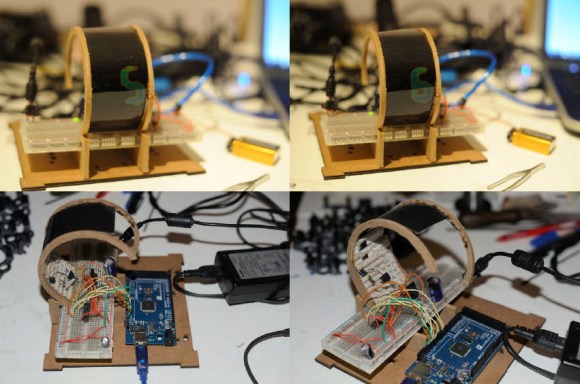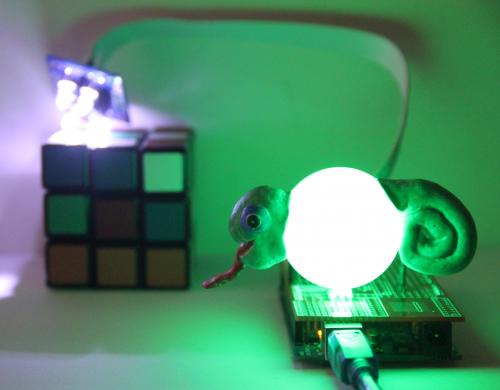
[Markus] has been teaching his daughter about animals using a big old animal encyclopedia. A few days ago, they stumbled upon the chameleon, and when he tried to explain its camouflage abilities, she didn’t quite understand. So he decided to make her a pet color-changing chameleon robot. The best part is he built it during her nap!
It’s a fairly simple circuit consisting of an Arduino Uno, a TCS3200 color sensor with breakout board, a ping pong ball, some resistors, and an RGB LED. He plans on adding temperature sensing as well as a capacitive sensor for touch later on. So far, his daughter loves it and plays with it all the time. She’s starting to learn how some chameleons can change their skin color in order to camouflage — and she’s learning the names of some new colors too!
As always, there’s a demonstration video following the break.
Continue reading “Robot Chameleon Teaches Little Girl About Camouflage”

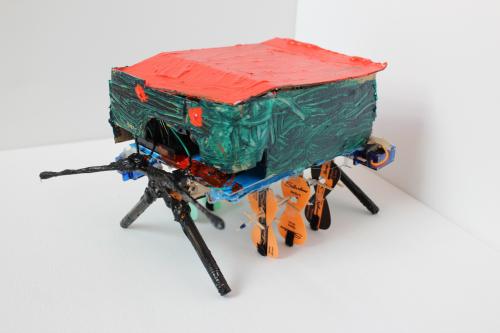
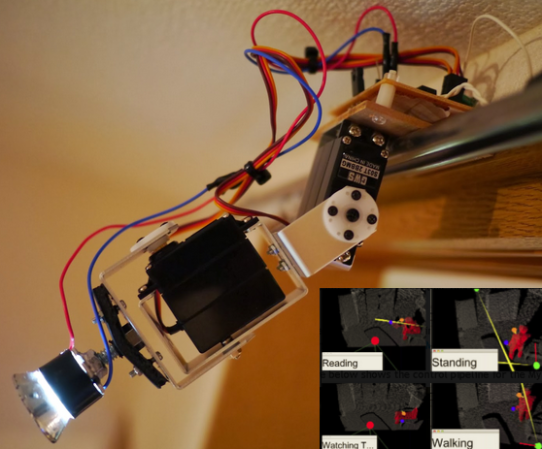
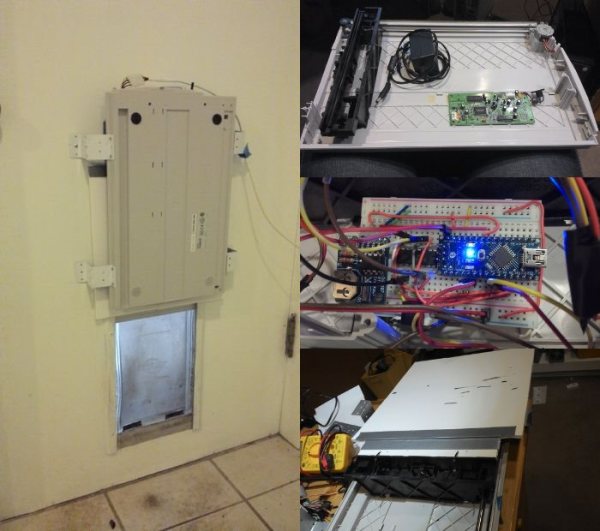
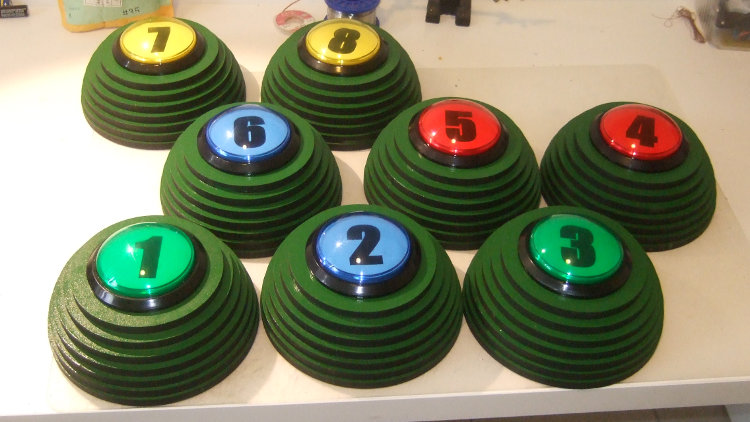 In what we hope is a new trend in interviewing, some of the people at [Anthony]’s place of work asked him to
In what we hope is a new trend in interviewing, some of the people at [Anthony]’s place of work asked him to  Okay, so he doesn’t have Grandma riding in it that we know of, but [zim] recently decided to turn a Jazzy mobility chair into “a radio-controlled platform for mischief”. RC offers more range than wifi or bluetooth, and he was able to find a reasonably priced secondhand radio on Craigslist. However, he found out that in the event of signal loss, the receiver keeps sending the last commands to the speed controller. [zim] didn’t want his 150 lb (68kg) mischief platform getting loose, so
Okay, so he doesn’t have Grandma riding in it that we know of, but [zim] recently decided to turn a Jazzy mobility chair into “a radio-controlled platform for mischief”. RC offers more range than wifi or bluetooth, and he was able to find a reasonably priced secondhand radio on Craigslist. However, he found out that in the event of signal loss, the receiver keeps sending the last commands to the speed controller. [zim] didn’t want his 150 lb (68kg) mischief platform getting loose, so 